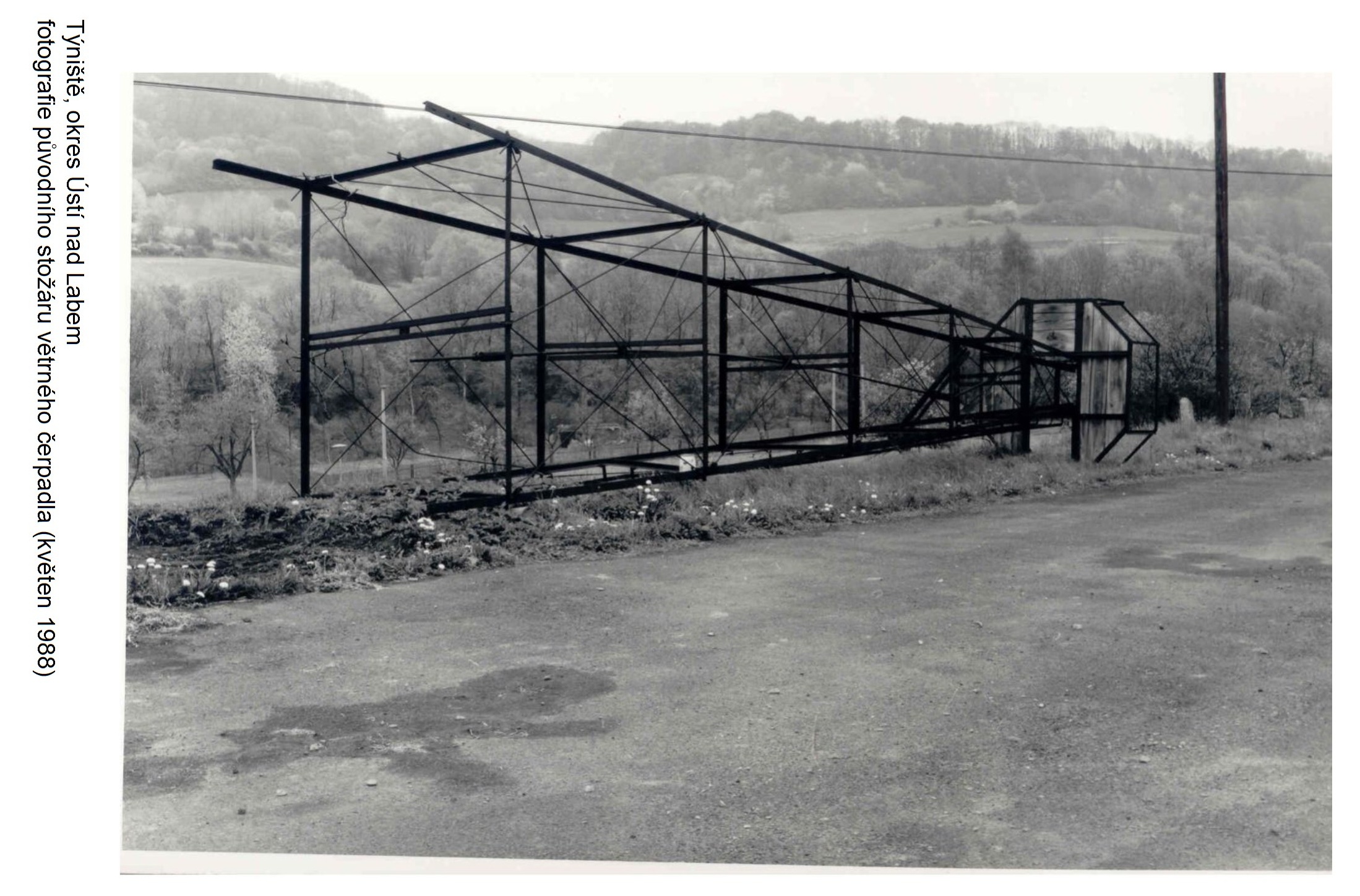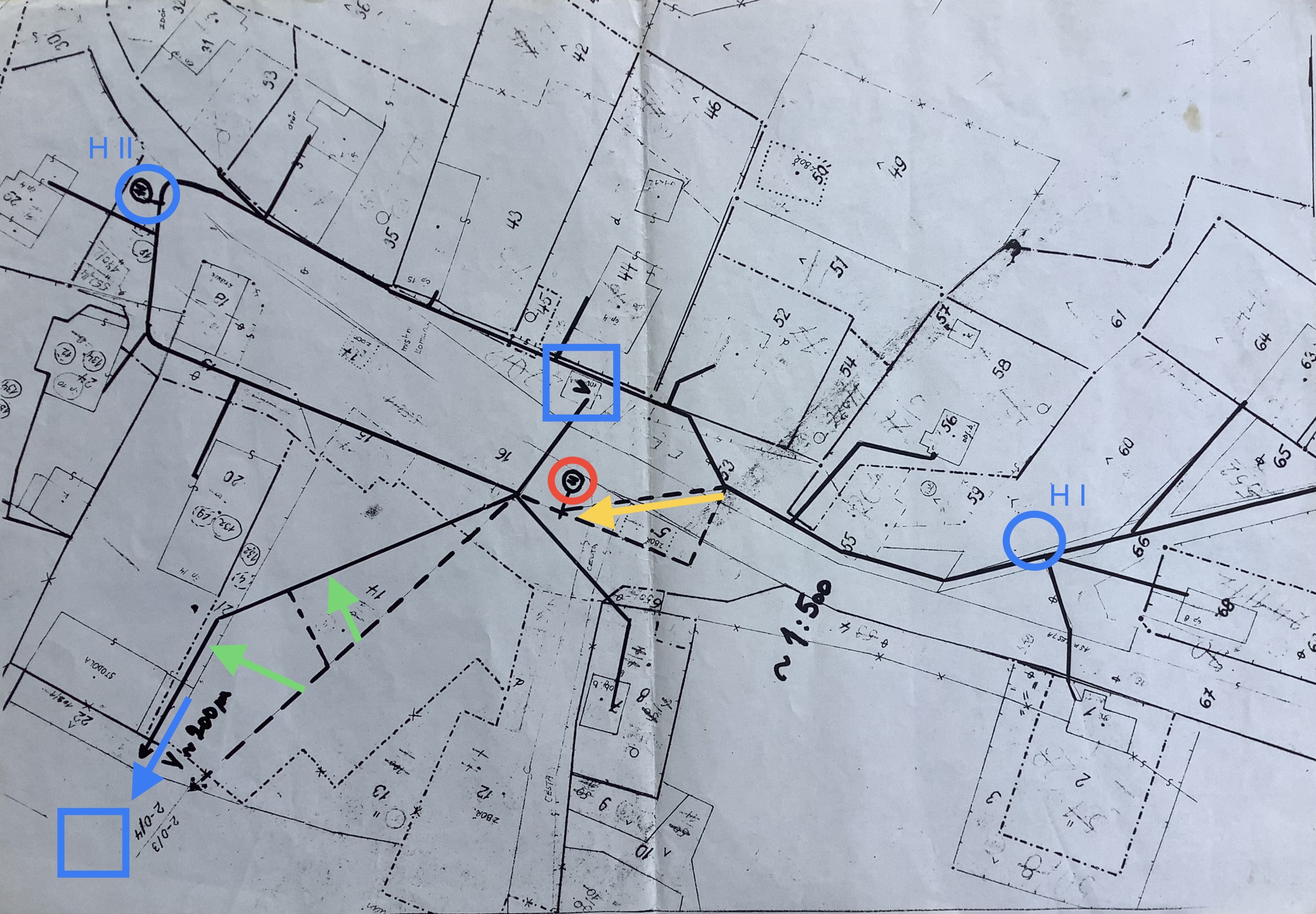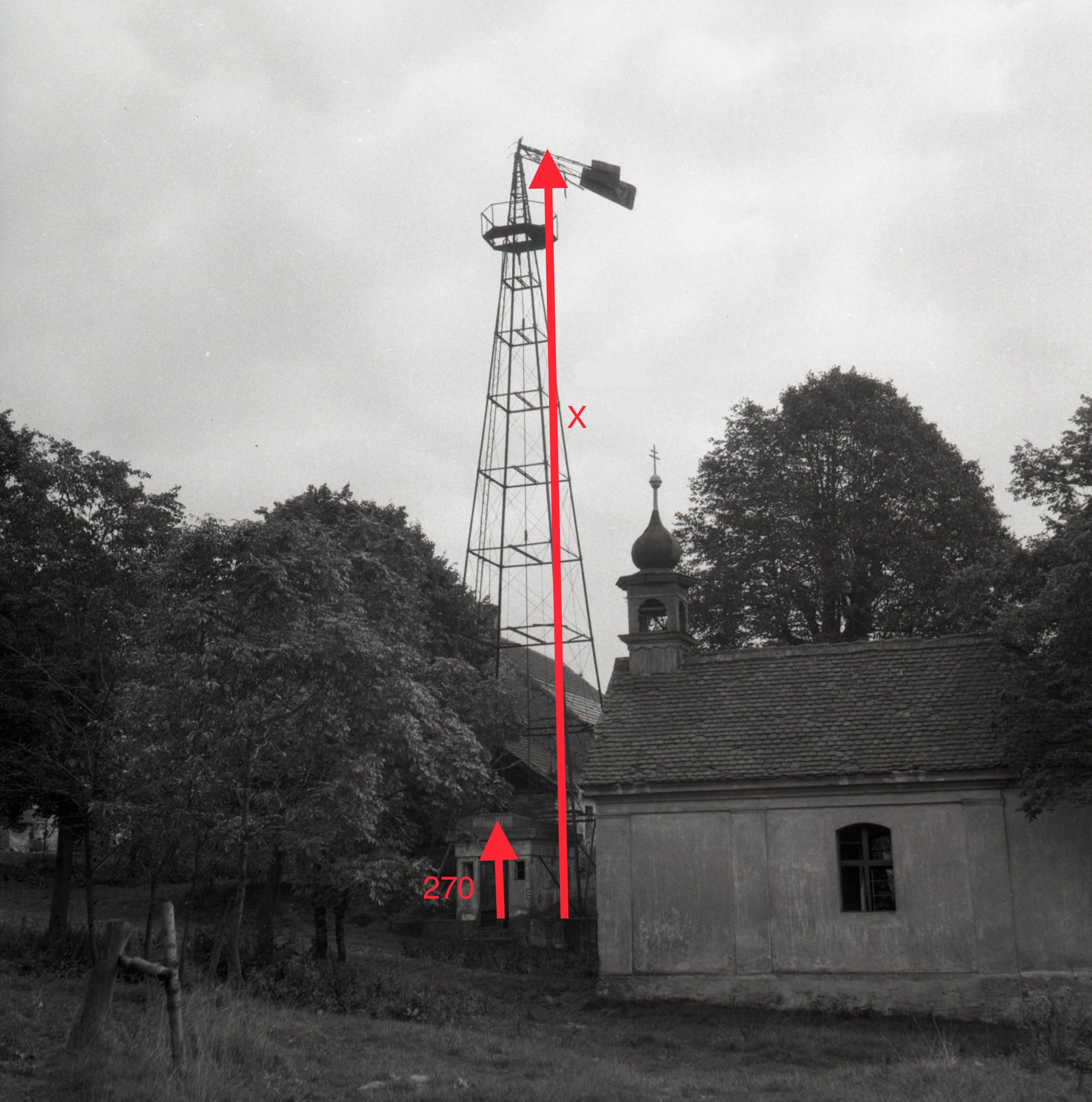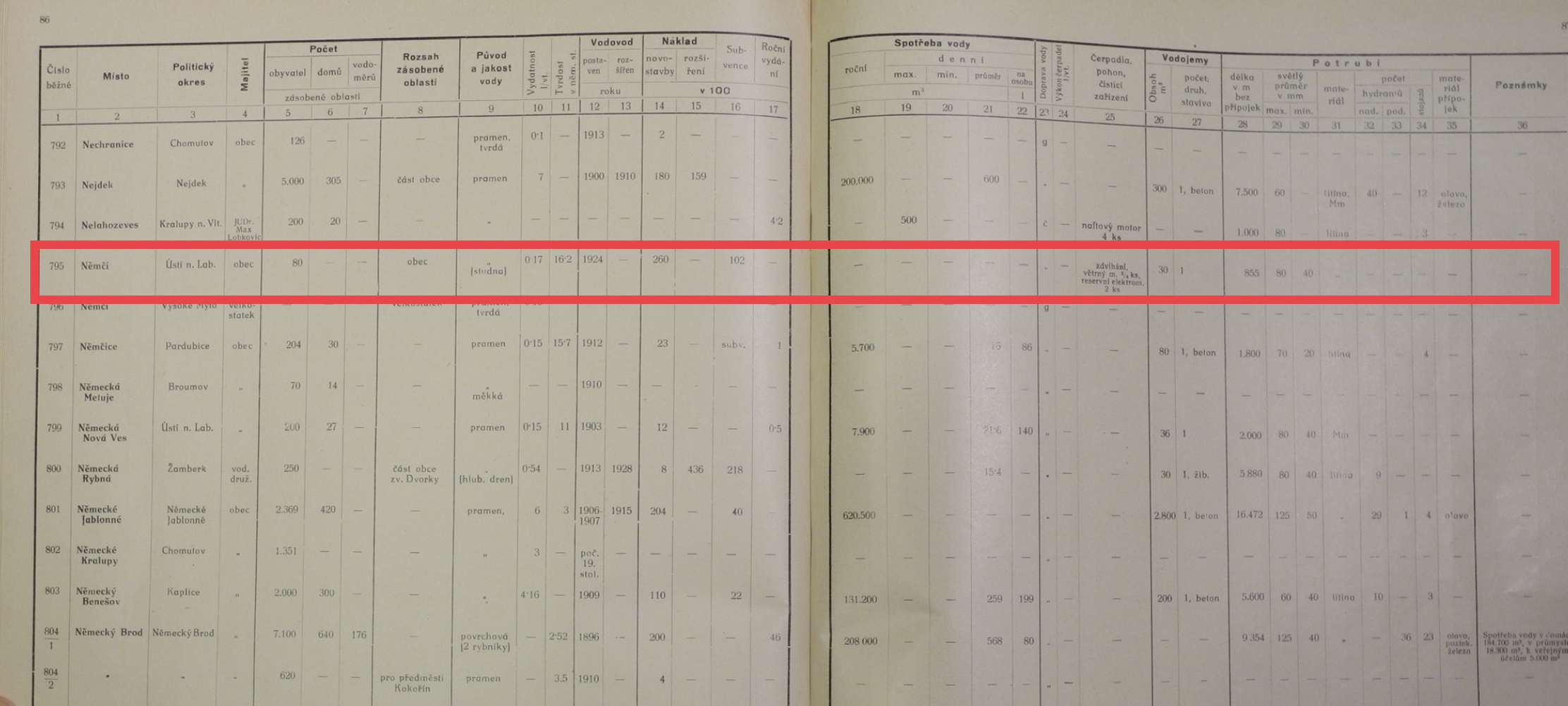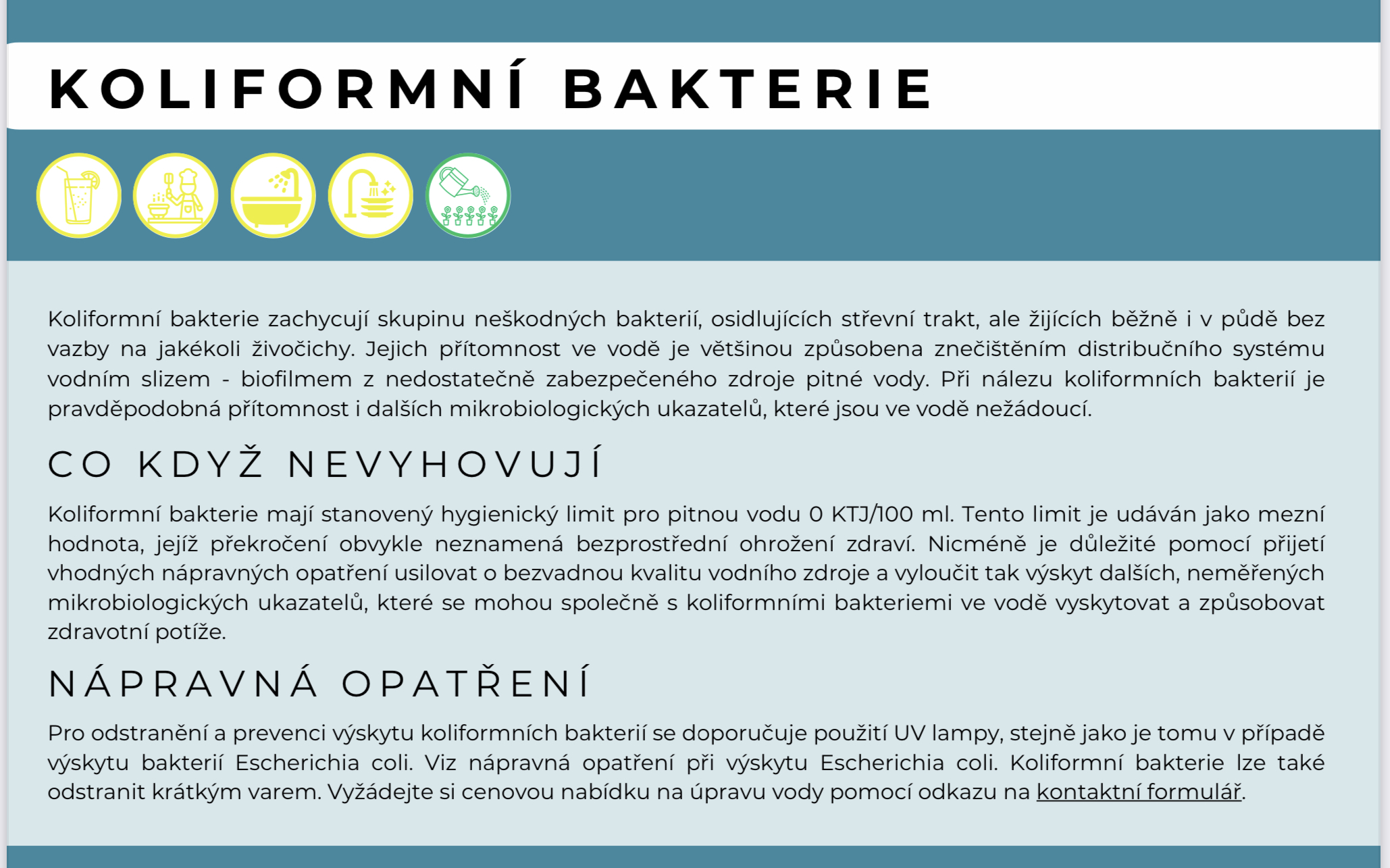From the statement of the National Heritage Institute ÚOP Ústí nad Labem dated 9. 4. 2024, the following can be read about the wind pump: The facility was constructed as part of the water management solution for the village of Němčí (Nemschen) and served as a water pump powered by wind energy. It was located above the waterworks in the center of the village. The manufacturer of the wind pump itself is not currently known, but the waterworks and water supply line were designed by the company Ernst Jüstel from Ústí nad Labem. The construction was carried out in 1923, as evidenced by a cast iron plaque placed on the preserved waterworks. The mast itself was built as a tower with an iron truss structure of a square pyramid shape, topped by a polygonal upper platform with a plank floor. The structure was assembled from steel L-sections and likely riveted. A drive shaft ran through the center, powering the pump. The technical design of the pump and wind wheel is currently unknown, and even in historical imagery, only parts of the device can be identified. It was most likely a paddlewheel windmill (wind engine) with a double rudder, which is still visible in historical photographs. This detail is quite rare and suggests that a Halladay turbine might have been used. The possibility of another, less common solution—such as a horizontal wheel—cannot be completely ruled out, but based on available materials, this cannot be confirmed. A replica intended for the railway museum in Týniště u Zubrnice was designed as a vertical paddle wheel with a cistern placed within the tower structure.
The wind pump was declared a cultural monument in 1958 and entered into the Central List of Cultural Monuments on 30. 12. 1987, when it was assigned registration number ÚSKP 44014/5-5300. The record states that the object requires a general repair. The pump tower was relocated in 1980 (or possibly 1988) to the cadastre of Týniště for the planned railway open-air museum, where it was stored. Allegedly due to poor technical condition, the equipment was scrapped, and a low-quality replica was produced. By this time, only the cast iron head, presumably for the rotor placement, remained from the original structure. In the spring of 1997, an agreement was reached with the museum to store all parts in a large-capacity Zs wagon, which remained at the railway station in Zubrnice. In 2004, a request was submitted to revoke the monument protection due to the loss of most of the original structure, and the cancellation of monument protection was confirmed by the Ministry of Culture on 13. 8. 2010. After the legal enforcement on 8. 9. 2010, all remaining components of the facility were disposed of.
The complete statement from the National Heritage Office is available HERE. The statement also mentions an aerial survey photograph from 1946, which shows the silhouette of the wind pump without the impeller.
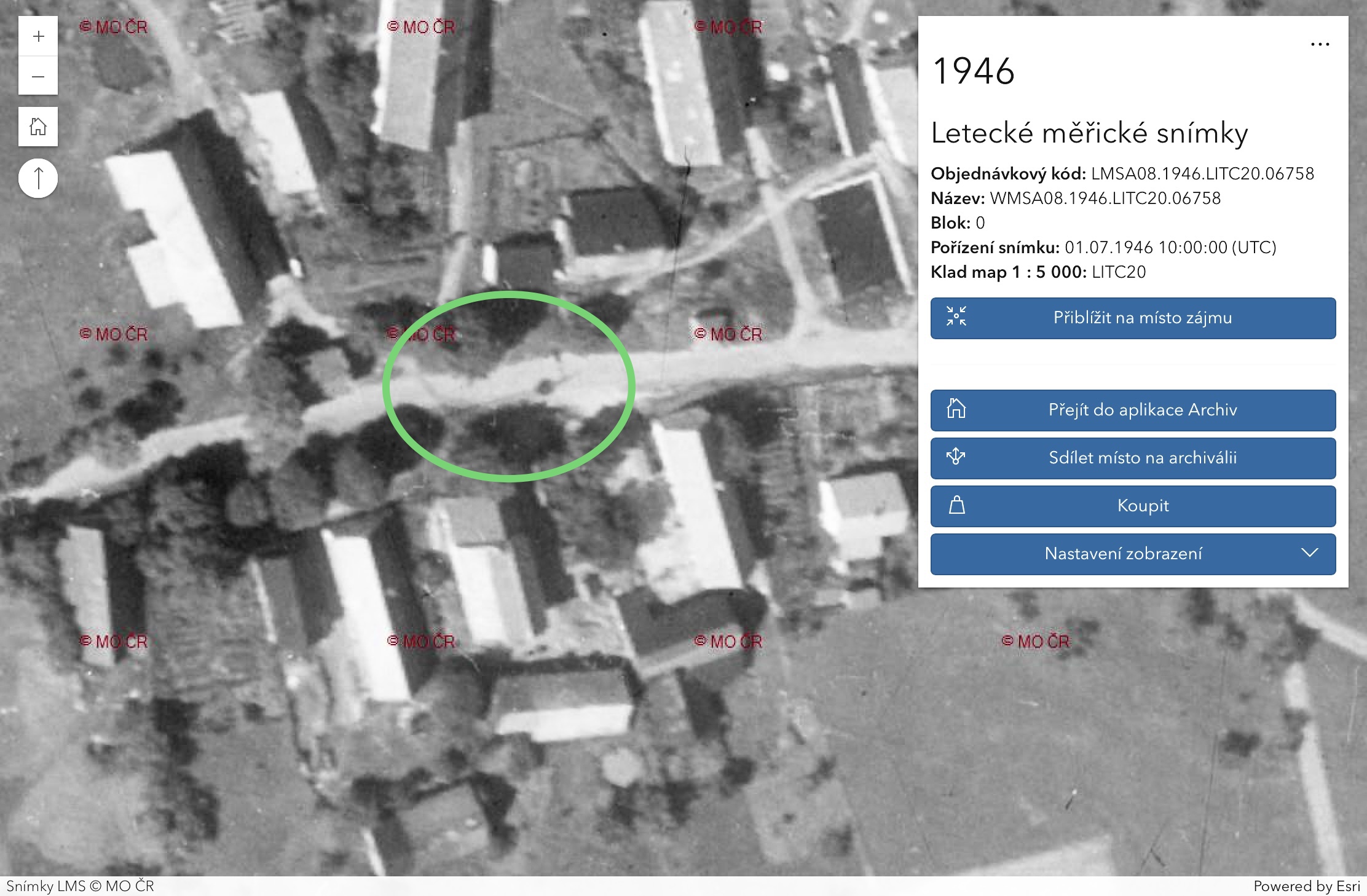
Josef Stehlík, who saw the paddlewheel in the yard of the STK in Ústí nad Labem, confirmed that the wheel had a design similar to that of the wind pump in Višňová near Znojmo. On the website of the Višňové municipality, in the tourist section, the wind wheel is listed as one of the interesting landmarks. It was built in 1910 by the manager of the local estate through the Vienna branch of the Dresden company Rudolph Brauns. In 1911, this company merged with another to form Vereinigte Windturbinen-Werke (VWW), which became a joint-stock company in 1923, headquartered in Dresden and later in Meissen. Given the geographical proximity of Dresden and Ústí nad Labem, in a German-speaking environment, it is likely that Ernst Jüstel procured the wind pump from VWW. Furthermore, as mentioned by the National Heritage Institute in its statement (note 2), the technical drawings of the wind pump prepared in the 1990s for the open-air museum in Zubrnice "state that it was a product of the Brauns and Reinsch - Meissen company" (which corresponds to the aforementioned VWW—more about this company HERE).
The first of the following photographs shows the current appearance of the wind wheel in Višňová, while the others depict the condition of the wind wheel in Němčí around 1960.
















